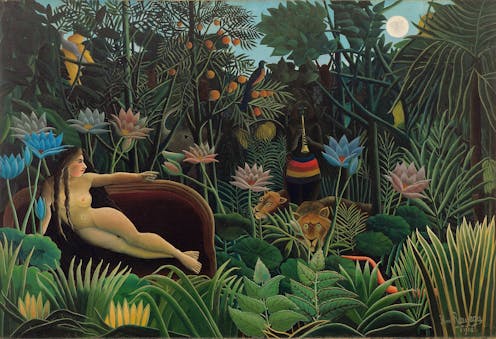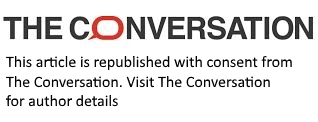Jane Rawson moved to ‘unspoiled’ Tasmania to outrun climate change, but the fearful questions followed
- Written by David Carlin, Professor of Creative Writing, RMIT University

This is a ridiculous book. That’s not my opinion or choice of words. It is how Jane Rawson, the author, describes Human/Nature within its own pages. It’s a throwaway comment, perhaps one an editor would have questioned – the type of loose thread that could easily have been snipped with nobody the wiser.
The danger of self-deprecation is that it can be thrown back in your face. I don’t mean to do that, so much as to ask: what is it about this heartfelt book that moves its author to dismiss it, even in passing, as ridiculous? What does it mean? What is it a sign of?
Review: Human/Nature – Jane Rawson (NewSouth)
In 2015, Rawson published a book with James Whitmore called The Handbook: Surviving and Living with Climate Change. That was back in those (slightly) less ridiculous times in the lead-up to the signing of the Paris Agreement, in which 174 nations and the European Union aimed to reduce global carbon emissions in order to limit global heating to 1.5 degrees above pre-industrial levels.
The Handbook set out, as handbooks do, to be a practical (“intelligent”) guide for everyday people. Written in a warm and approachable style, it aimed to “give you stories and advice from individuals who are already quietly doing amazing things”.
Ten years later, the stuttering movement towards reducing fossil-fuel pollution continues to come up against resistance from vested interests. With evidence the threshold of 1.5 degrees warming may have been exceeded, it is hard not to feel paralysed in the face of the many assaults on reality, including bait-and-switch nuclear fantasies.
Since facts often prove incapable of changing minds or behaviour, many artists and writers are exploring ways to confront and break through the old stories and power structures that seem to have us, collectively, in their thrall. Among these old stories is the one that says that humans are separate from, and superior to, all other living (and non-living) beings.
This is a story with particular traction in the lineage of European thought, in which Aristotle begat Descartes begat Charles Lyell, Alfred Russel Wallace and Carl Linnaeus. The able-bodied European male human was inscribed – by himself, no less – as at the natural pinnacle of the hierarchy of beings: the most intelligent, the most rational, and therefore deserving of the spoils.
In her new book, Rawson pulls at the threads of this story and watches it unravel. Her attention dwells in the subtlety and complexity of the forward-slash that cuts between Human and Nature in her title, and the typographic slippage of Nature onto a line below. Each chapter in this book, which reads like a chain of interlinked essays, invites a new slide, down and across, into a playfully serious unsettling of assumptions.
“Having abandoned the hope of changing other people’s minds”, Rawson is “still itchy to dig about for some ways to change my own”.
Rawson sets out to make this a book of questions rather than answers. Because, to return to the scene of our collective existential crisis, the problem is not simply a matter of technological solutions; Rawson suggests that we fear the questions. This book is only “ridiculous” in so far as we find ourselves in the uncanny situation where, as Fredric Jameson wrote, “it is now easier to imagine the end of the world than the end of capitalism”.
One by one, Rawson sifts through the fantasies, desires and dilemmas she finds herself carrying: the feelings of shame and hopelessness she confronts in herself as she seeks to remain alive to, and active in, the world.
When she and her husband made the classic tree change from inner-city Melbourne to semi-rural Tasmania, part of her believed Tasmania would be safe from climate change. Tasmania was a place of unspoiled wilderness: a place where Rawson could go back in time “to the moment before everything went wrong”, while not feeling “like my very existence is fucking things up”.
Post-MONA Tasmania was cool, too – although, she writes, “I try to pretend I’m different from the rest of them (I barely go to Dark Mofo!).”





